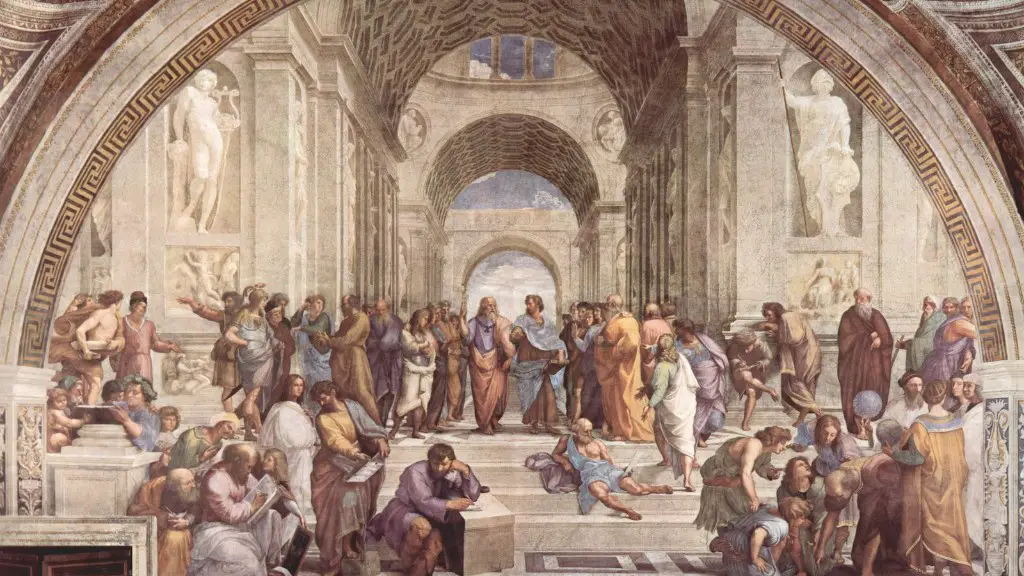Ancient Rome was one of the most powerful empires in history, and it relied heavily on slaves to power its economy. Slaves played an important role in virtually every aspect of Roman life, from agriculture and industry to domestic work and entertainment. But where did these slaves come from? The answer to this question is a complex one, as there were various sources and methods of acquiring slaves throughout the Roman Empire’s history.
One of the main sources of slaves for Ancient Rome was war. Rome was always expanding its borders and conquering new territories. As Roman armies advanced, they would often take prisoners, who would then be enslaved. Slaves were also acquired through piracy, trade, and indebtedness. Pirate ships were often raided in order to capture slaves, and traders would often offer slaves to Roman buyers in exchange for goods. Finally, people who got into debt could be sold into slavery due to their inability to repay their debts.
In addition to acquiring slaves through warfare and trade, another method of slavery in Ancient Rome was manumission, which was the practice of freeing a slave in exchange for a sum of money or other goods. This practice was relatively common, even among the wealthy and powerful, as it was seen as a way to support the slave economy while at the same time presenting an opportunity to those who had been enslaved. Manumission was often used as a way to get rid of undesired slaves without the possibility of them returning.
In addition to manumission, another common practice in Ancient Rome was to buy already-enslaved people from slave dealers. This was a major source of slaves for the wealthy and powerful, as it allowed them to acquire desired individuals quickly and easily. Slave dealers were particularly active in areas around the Mediterranean Sea, where they would acquire slaves from various sources and then transport them to Rome or other major cities.
Finally, it is believed that some Roman citizens also sold themselves or their children into slavery in order to pay off debts or as a way to escape impossible circumstances. This practice was especially common during times of economic hardship, such as during the eras of Julius Caesar and Augustus Caesar.
In conclusion, slaves were acquired for Ancient Rome from a variety of sources, including war, trade, piracy, and manumission. In addition, some Roman citizens chose to sell themselves or their children into slavery in order to escape impossible circumstances or pay off debts. This practice was relatively common, even among the wealthy and powerful.
Impact of Slavery on Ancient Roman Society
Slavery had a huge impact on Ancient Roman society due to its prevalence and influence in nearly every aspect of life. Slaves had few rights, no freedom, and were considered property of their master. Slavery was deeply embedded in Roman culture, law, and economy. As a result, it had a major impact on social structure, politics, and even religion.
The large number of slaves in Ancient Rome had a profound effect on the gap between the wealthy and the commoners. Slaves were seen as valuable assets as they could do many of the tasks that the wealthy and powerful could not, such as manual labor. This allowed the wealthy to live in comfort while the working class faced serious financial difficulties. Additionally, slaves were often used as a source of entertainment for the upper class, which further increased the gap between rich and poor.
The excessive reliance on enslaved labor also had an effect on politics in Ancient Rome. Slaves were seen as little more than a commodity, and as a result, their labor and lives had less value to the powerful. This made it easier for the rich and powerful to take advantage of them, which in turn led to increasing levels of inequality and a weakened sense of justice.
Finally, slavery had a profound effect on religion in Ancient Rome. Slaves were seen as inferior to their masters, and as such, they often faced religious discrimination. Slaves were not allowed to participate in the official religious ceremonies of the state, nor were they allowed to worship in their own way. This lack of religious freedom had a major impact on the lives of slaves in Ancient Rome.
Slave Revolts in Ancient Rome
Slave revolts were a common occurrence in Ancient Rome. Over the centuries, slaves rose up against their oppressors in a number of different ways. Some slaves simply fled, while others formed groups and plotted revolts against their masters. The most famous of these rebellions was the Third Servile War, also known as the Gladiator War, which was fought between 73-71 BCE. This revolt was organized by a former gladiator named Spartacus and his followers and it lasted for two years before it was finally put down by the Roman legions.
Slave revolts could be incredibly disruptive and devastating to Roman society. During the Third Servile War, for example, over one hundred thousand slaves were killed in the fighting and many cities and towns were destroyed. The fear of a similar uprising kept the Roman authorities on their toes and made them less likely to abuse their slaves.
Despite this, slave revolts were relatively few and far between and rarely lasted more than a few months. Slaves were generally too disorganized and lacked the necessary support or resources to orchestrate a successful revolt. Additionally, the powerful Roman army was always ready to put down any potential uprising. As a result, slave revolts had relatively little impact on Roman society as a whole.
Life as a Slave in Ancient Rome
Life as a slave in Ancient Rome was often grueling and filled with physical and psychological abuse. Slaves were treated as property and were subject to their master’s whim. They were often given difficult tasks, from agricultural labor to working in mines, and very little in the way of protection from harsh conditions. Slaves were often worked to exhaustion and were given very little in the way of food or shelter.
Slaves were also subject to physical punishment for even the smallest of offenses. This could range from beatings to branding and even mutilation. The psychological toll of this treatment was often more severe than the physical, as slaves were constantly reminded of their lack of rights and freedom. Slaves also faced discrimination and racism, which further compounded their suffering.
Despite all of this, a small number of slaves managed to gain their freedom and become highly successful. The most famous example of this was the politician Tiberius Gracchus, who used his newfound freedom to improve conditions for slaves and disadvantaged citizens. However, such stories were few and far between and for the vast majority of Roman slaves, life was a constant struggle against hardship and oppression.
Legacy of Slavery in Roman Society
The legacy of slavery in Roman society is still felt to this day. Slavery played a major role in shaping the social and economic structure of the Roman Empire and its legacy can still be seen in many aspects of modern life. For example, many of the cities and towns that were built during the Roman era are still standing today and can be found throughout Europe and beyond.
Furthermore, the legal and social concepts of slavery remain in some form or another in today’s world. In the United States, for example, racial inequalities are still a major issue, with minorities facing far more disadvantages than the white majority. This echoes the state of affairs during the Roman Empire, where slaves were seen as second-class citizens and were denied basic rights and freedoms.
Finally, it is important to recognize the suffering and trauma that slaves endured in Ancient Rome. Slaves were treated harshly and were often subjected to physical and psychological abuse. This suffering and trauma still echoes through the centuries and is an important part of the legacy of slavery in Roman society.
Role of Women in Ancient Roman Slavery
The role of women in Ancient Roman slavery was often overlooked or minimized. Women were excluded from many of the same rights and privileges that men enjoyed, and they were often seen as subservient to them. Women were also more likely to be enslaved than men, and they were often subject to sexual exploitation and abuse. This discrimination against women was deeply ingrained in Roman society and, as a result, their status as slaves was often even worse than that of men.
Despite this, there were a few instances where women managed to gain power and influence as slaves. Most notable is the story of Lydia, a female slave who obtained her freedom and became one of the most powerful politicians in Rome. Lydia was able to use her influence to improve the lives of slaves and advocate for more humane treatment.
In conclusion, the role of women in Ancient Roman slavery was often overlooked or minimized. Women were more likely to be enslaved than men and were subject to severe discrimination and abuse. However, there were a few examples of female slaves who managed to gain influence and power and make positive change.





